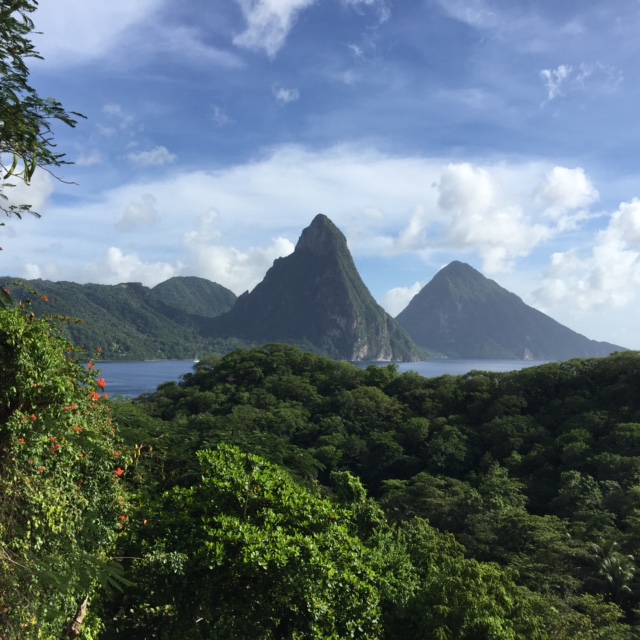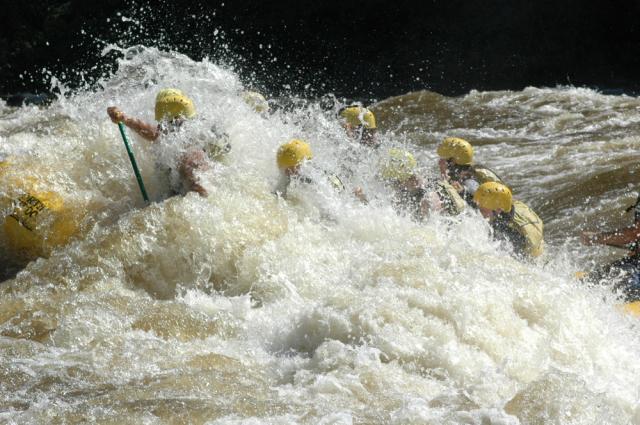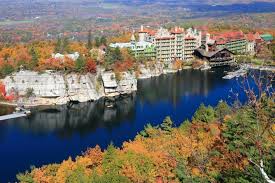
There’s a reason why
Anse Chastanet is consistently rated one of the top resorts in the Caribbean by
Travel & Leisure and
Conde Nast Traveler. The view of those twin volcanic peaks, the Pitons, from the balcony of my room is jaw-dropping. The way the jagged ridges rise from the sea to a height over 2,000 feet reminds me of a South Pacific isle more than the Caribbean. It’s so dramatic that I’m having a hard time focusing on this blog while peering over at this breathtaking sight. Anse Chastanet, perched on a hillside, is also known for its pristine beach and sheltered bay, one of the best spots on the island for snorkeling. But the reason I’ve come to Anse Chastanet is to
mountain bike.
Next door to Anse Chastanet is Anse Mamin, a former 18th century plantation and sugar mill. The 500-acre ruins are now home to more than 8 miles of mountain biking. I met my guide Tyson next to one of the ruins, a former storage facility for molasses that now houses Cannondales and off we went on the Riverside Trail. Within moments we were riding over fallen leaves of almond, tall African tulip, and calabash trees on a soft singletrack trail next to a river. Deep in the jungle we crossed over a bridge onto the Agua Dulce trail, which translates to “Sweet Water.” The trail was sweet as we cruised downhill sweeping over some rocks and roots to make it to the first reservoir ever built on Saint Lucia.
We jumped off our bikes as Tyson grabbed ripe guava from a tree, sliced it in half and we sucked it down. Who needs Gatorade when you have an island that grows 67 types of mangoes? He then picked a golden apple, a cross between a tart apple and a pear, and a succulent pink grapefruit. Then we passed more stone walls, remains of a building that used to boil down the molasses. You can still see the cast iron pots made in the UK. Within an hour we were back at the beginning covered in sweat from the 100% humidity. This is when Tyson gave me the option to tackle more of the singletracks on my own. How could I say no? I warmed up with a quick little run on the Banja Loop and then tackled the more challenging French Wall loop, which led me to the Bamboo Rocks loop. None were too technical. French Wall had some easy switchbacks and a nice downhill run. But anyone who’s mountain biked before will love the opportunity to bike on a former sugar plantation in the Caribbean. Then sit back on your porch, rum drink in hand, and soak up as much of those Pitons as possible.
 It’s a long drive on logging roads to reach the Spencer Rips put-in on the Dead River, but once there, be prepared for a glorious run on the longest stretch of continuous whitewater in New England. The river churns along 16 miles of almost nonstop Class III and IV rapids, enhanced by 8 dam releases from May through October. There are no bridges, roads, or other signs of civilization until the end—just a rip-roaring ride through big water on rapids with names like Minefield, Humpty Dumpty, and Big Poplar Falls. Sign up for one of the 8 thrilling days of rafting with reputable Maine outfitter, Northern Outdoors.
It’s a long drive on logging roads to reach the Spencer Rips put-in on the Dead River, but once there, be prepared for a glorious run on the longest stretch of continuous whitewater in New England. The river churns along 16 miles of almost nonstop Class III and IV rapids, enhanced by 8 dam releases from May through October. There are no bridges, roads, or other signs of civilization until the end—just a rip-roaring ride through big water on rapids with names like Minefield, Humpty Dumpty, and Big Poplar Falls. Sign up for one of the 8 thrilling days of rafting with reputable Maine outfitter, Northern Outdoors. 
 On April 16, John Connelly, the former leader of L.L. Bean’s Outdoor Discovery Schools, set out on a 1500-mile, 75-day solo paddling journey. Connelly, now president of Adventurous Joe Coffee hopes that his PaddleQuest 1500 inspires a desire for the outdoors. “I’m making this trip for anyone who’s ever stared into the night sky and yearned for a deeper connection to the world beyond ourselves,” says Connelly. Follow along as
On April 16, John Connelly, the former leader of L.L. Bean’s Outdoor Discovery Schools, set out on a 1500-mile, 75-day solo paddling journey. Connelly, now president of Adventurous Joe Coffee hopes that his PaddleQuest 1500 inspires a desire for the outdoors. “I’m making this trip for anyone who’s ever stared into the night sky and yearned for a deeper connection to the world beyond ourselves,” says Connelly. Follow along as  Having just returned from a glorious trip to the Lake Geneva region of Switzerland, it was an easy call to make that our feature story in the
Having just returned from a glorious trip to the Lake Geneva region of Switzerland, it was an easy call to make that our feature story in the  There’s a reason why
There’s a reason why